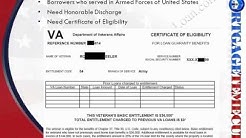Contents
Refinancing into an FHA mortgage, either from a conventional loan or an existing FHA loan. Having an efficient underwriter and mortgage lender can make the difference between getting in your home.
The main difference between FHA and conventional loans is the government insurance backing. Federal Housing Administration (fha) home loans are insured by the government, while conventional mortgages are not. Additionally, borrowers tend to have an easier time qualifying for FHA-insured mortgage loans, compared to conventional. Did you know?
The primary difference between conventional loans and FHA loans is that conventional loans are not government-insured. FHA loans are guaranteed with government funds that provide extra protection for lenders.
 These government mortgages tend to exhibit larger loan sizes then conventional mortgages. In contrast, VA mortgages.
These government mortgages tend to exhibit larger loan sizes then conventional mortgages. In contrast, VA mortgages.
Mortgage Insurance. One big difference between conventional and FHA loans is that with FHA, the borrower is required to pay an upfront insurance premium and an annual premium (usually paid as part of a monthly mortgage). With conventional loans, if a borrower makes a 20 percent down payment, no mortgage insurance is required.
What’s the difference between Conventional Loan and FHA Loan? Homebuyers who intend to make a down payment of less than 10% of a home’s sale price should evaluate both FHA loans and conventional loans. An FHA loan is easier to acquire for those with low credit scores and requires as little as 3.5% for down payment.
A conventional home loan is one that is not insured or guaranteed by the federal government. This distinguishes it from the three government-backed mortgage types FHA, VA, and USDA. Understanding the difference between FHA and conventional loans can help you avoid unnecessary time and expense when you try to qualify fo
· Difference Between FHA and Conventional Loans. – · FHA vs Conventional Loans FHA and Conventional loans are two kinds of loans available to a home buyer in United States. With increasing property prices, it is becoming harder to buy a home these days. To compound the misery of the people, interest rates are also on the upswing.
In deciding between a conventional mortgage and an FHA-insured mortgage. how much more difficult it is to qualify for a conventional than for an FHA. My focus here is on differences in the minimum.
Standard Mortgage Payment Use this Mortgage Amortization Schedule Calculator to estimate your monthly loan or mortgage repayments, and check a free amortization chart. amortization schedule calculator This loan calculator – also known as an amortization schedule calculator – lets you estimate your monthly loan repayments.Mortgage Insurance 20 Percent conventional to fha refinance Should You Refinance Your FHA to a Conventional Loan. – The Cons of Refinancing an FHA Loan to a Conventional Loan It’s important to keep in mind that refinancing comes with costs, such as closing fees, and may require you to present many of the same documents during the application process as you did with your original home purchase.One of the most persistent myths still making its rounds is that you need 20 percent down to get a mortgage. In fact, you have not needed 20 percent down since FHA went into business in 1934.